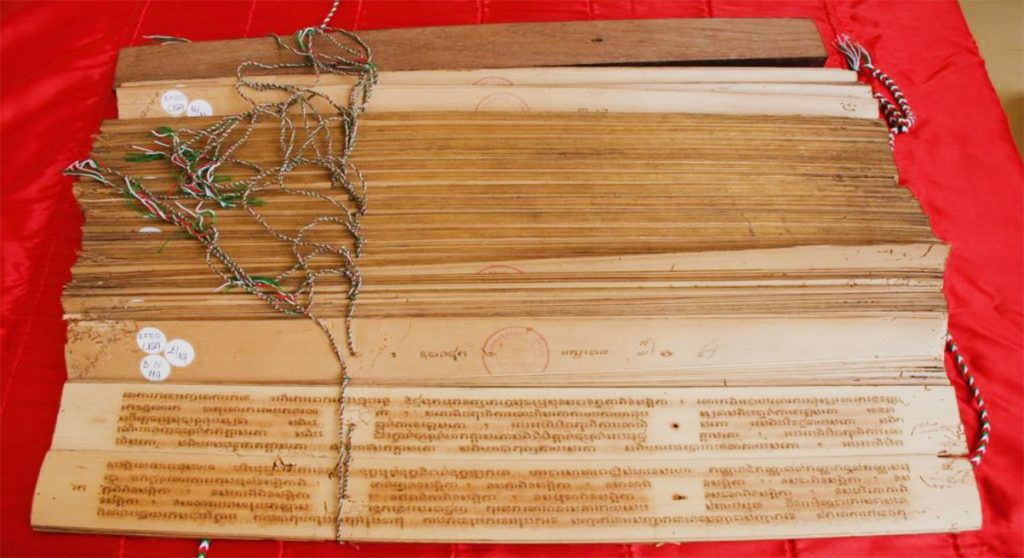Nou Hach (នូ ហាច) (1916 – 1975) was a famous Cambodian author, perhaps best known for his novel, Phka Sropoun (The Fading/Wilting Flowers). He was born in Battambang in 1916, and died in 1975 during the Pol Pot regime.

Hach was the first child born to a farming family in Kampong Preah Commune, Sangkae District, Battambang. He began his studies at Wat Kampong Preah Primary School and showed his talents by becoming fluent in reading Sloek Rith (សាស្ត្រាស្លឹករឹត), an ancient style of manuscript written mostly in Pali or Sanskrit on dried palm leaves.

In 1932, he passed the entrance exam at Preah Sisovath High School in Phnom Penh, from where he graduated after showing himself to be studious and hardworking.
After graduation, he found work as a judge in Siem Reap. In 1947, he worked on the Kampuchea Newspaper, published by the Ministry of information.
In 1948 he became an assistant to prime minister Yutavong, before returning to become department head at the Ministry of Information.
In 1949 his first, and best known, work was published; a novel entitled Phka Sropoun (ផ្កាស្រពោន). The novel, set during the French colonial period, looks at the issues of arranged marriage, which was still a cultural tradition.
The novel tells the story of Bun Thoeun (ប៊ុនធឿន) and Vitheavy (វិធាវី), whose parents have arranged for them to marry since they were young. After Bun Thoeun’s father loses his boat in a storm transporting rice to Prey Nokor, his family lose their livelihood and become poor.
“Mrs. Nuon (យាយនួន), mother of Vitheavy, prefers money over honor and cancels the engagement. Instead she arranges a new marriage for Vitheavy with Naisot (ណៃស៊ត), who is a rich man. Naisot is bad-tempered and immoral and uses his money to do anything he wants.
After becoming engaged to Naisot, Vitheavy falls ill, and pines for Bun Thoeun. However, she dares not argue with her mother over the engagement. As her health worsens, Mrs. Nuon takes her daughter to t Siem Reap, but Vitheavy’s spirits remain low.
When Vitheavy coughs up blood, her superstitious mother takes her to a fortune teller/healer, who tries various methods to try to cure her. However, it does not work and Vitheavy’s condition worsens.
Bun Thoeun, on hearing Vitheavy will be getting married to someone else, becomes very sad and cries alone. He goes into the forest for days with Mr. So (តាសូ), to find firewood and fish to try to take his mind off the marriage. When he returns home, he learns Vitheavy had died, causing him much grief.”


In 1952, Nou Hach took a job at the Ministry of Foreign Affairs, as Director of Political Affairs (Director en Direction des Affaires Politiques). As Director, he was sent on diplomatic missions abroad, including to Thailand and Yugoslavia. Later he was appointed as the Cambodian representative to Vietnam and Indonesia, as well as a special representative at United Nations.
King Norodom Sihanouk then appointed him as the secretary of Ministry of Public Works and Communication by Royal Decree 252.
On January 17, 1958, he became a member of the Khmer Writer Association, created by Rim Kin in 1954.
Nou Hach was married to Tan Rem and the couple had 8 children, some of whom now live in the United States and Australia.
As well as Phka Sropoun, he also wrote other fiction and non-fiction works in Khmer and numerous poems in the French language. មាលាដួងចិត្ត (Mealea Duong Chit/Heartbreakers) was published in 1972.

In addition, he contributed to many magazines, such as Reatrey Thngai Sao Magazine, Neary Magazine, and Roum Mitt Magazine. He wrote on topics such as the paranormal, melancholy, real life issues and travel stories from France that were well known during the Lon Nol period of 1970 to 1975.
Nou Hach made his final return to Cambodia in 1974. Like so many other intellectuals, academics and artists, he was taken and killed by the Khmer Rouge, probably in 1975. As far as is known, his body has never been found.
Sources: Kohsantepheap, Wikipedia, VOA
